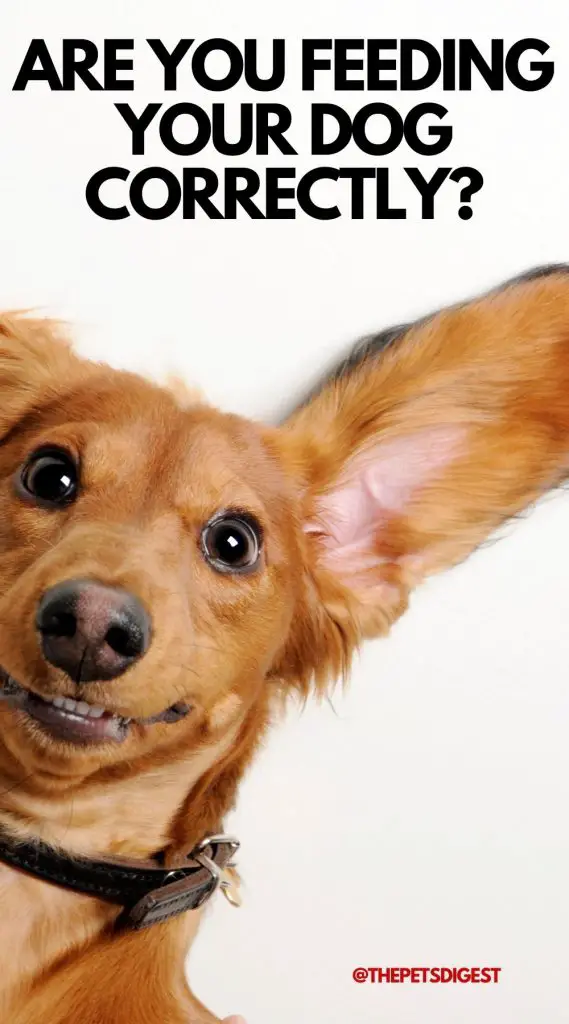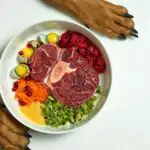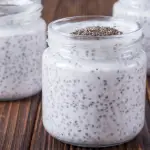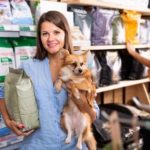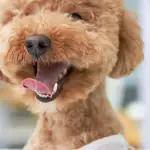Your dogs diet is a key component of keeping them healthy. Make sure you are feeding them high-quality nutritious meals. This is why it’s extremely important to speak with your veterinarian and gain proper canine education. Below are some general rules to follow about how much, how often and what to feed your fur baby.
How much should you feed your dog?
Portion size may vary based on breed, age, and health condition, and settling on the right amount can be tricky. While there are recommend feeding amounts on the back of most dog food bags, these are just suggestions and you may notice that your dog does not function well with the amounts. Since every dog is unique, you will have to determine what works best for your dog through regular adjustments and observations. Unless stated otherwise, the amounts on the packaging is the recommended amounts for your dog over a 24-hour period.
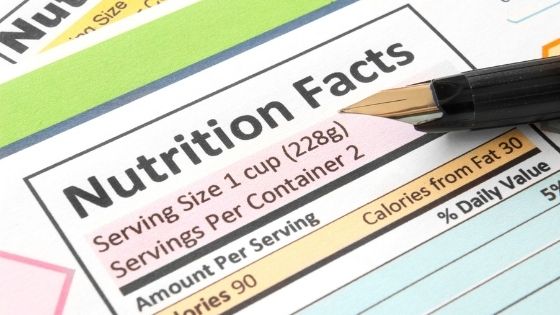
Feed too much and it could lead to obesity, feed too little and it could lead to malnourishment, it can be a thin line when feeding your pup. However, most dogs tend to fall within the normal to obese weight range.
To determine how much food to feed your dog, start by knowing your dog’s estimated adult weight and from there you can determine how many calories your dog will need per day. One option is to try using a calorie calculator for dogs although you may need to adjust the results.
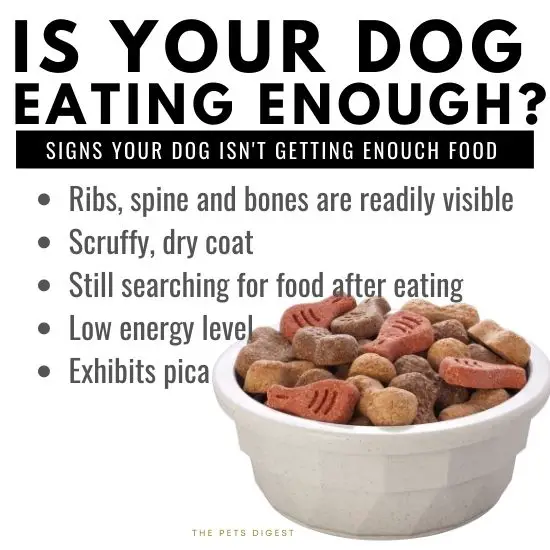
How often & when should you feed your dog
How often you feed your dog is just as important as what and how much you give your dog. With that said, there are no hard and fast rules about how often your dog should eat, each dog is different and how often you feed them should be taken as a case by case basis.
Most pet owners tend to stick to feeding their dogs twice a day, morning and night as this is usually a good place to start off. This is the least number of feedings that most vets recommend, but you may notice that your pup does better with more small meals throughout the day.
Some things to take into account when deciding how often to feed your dog are age, breed, and medical issues
- Dogs with medical issues such as pancreatitis, may benefit from feeding three or four small meals throughout the day. Speak with your vet to determine if your dog requires specialized feeing schedules.
- Size also plays a role in deciding how often you should feed your dog, large breed dogs like Great Danes may require more calories and hence more feedings throughout the day than smaller breeds like Yorkshire Terriers.
- Puppies (8 weeks – 1 year): Puppies, like babies are growing and you may notice that they tend to burn off much of the food that they eat quickly and are still hungry after you feed them. If you notice that they are still hungry and searching for more food after they have eaten it is safe to increase how often you feed them. In some cases pet owners choose to feed puppies up to three or four times a day. Some owners opt for free feeding puppies since they always seem to be extremely hungry, but this often leads to uncontrolled accidents in the house so it usually is not recommended, although is safe to feed them more often throughout the day to keep up with their growing bodies. If you want more information on feeding a new puppy read our article here.
- Some owners find that as their dog approaches senior status, they tend to eat less and decide to decrease the amount they feed them, or continue to feed them them the same amount but split it into more meals throughout the day.
- Refrain from feeding your dog close to bedtime as this may cause accidents in the home and they may not get a great nights sleep as their stomach is digesting the food.
In general, feeding more times throughout the day tends to allow for better digestion and comfort for your pet, but it is extremely important not to feed. It is best to come up with a feeding schedule for your dog, as this can help prevent accidents in the home and with healthy digestion.
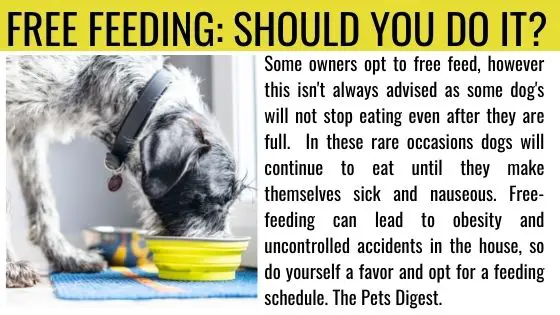
What should you feed your dog?
There are many many feeding options for dogs available and you have to decide if you are going to feed your dog dry kibble, moist food, homemade meals, or a mixture of both. Once you have decided, it is important to remain consistent in your pups diet as a large deviation often times causes stomach upset and possibly diarrhea, vomiting, and nausea. Irregardless of what you choose, ensure that it is a high-quality food. If you are having trouble choosing a food for your dog, you can read our article here about how to choose a dog food.
Here are some of the pro’s and con’s of each type of food:
DRY KIBBLE
| PRO | CON |
| Better weight control | Foods vary wildly in quality and content, choosing a food can prove to be difficult in some cases |
WET FOOD
| PRO | CON |
| Tastier to most dogs | Harder on teeth and can increase weight gain easier than many dry diets |
HOMEMADE DIET
| PRO | CON |
| You know exactly what your dog is eating | There is a lot of information to learn and any missteps can be dangerous for your pets health |
Homemade meals
While I believe in cooking for my dogs, I use it as a supplement to the kibble already available at the stores. I’ll usually make them something nutritious and use it as a topping on their dog food. Many people opt to do this because cooking for your dog at home can be extremely time consuming and if not prepared properly can do more harm than good for your pet. You need to know your dog’s energy and nutrient requirements, for instance puppies must have a specific amount of calcium otherwise they can develop metabolic bone disease or orthopedic conditions like early-onset arthritis.
If you want to feed your dog whole meals instead of kibble, but don’t want to cook for them, you can opt for a dog meal service which will regularly deliver fresh, appropriately portioned meals to your door. Since these companies have already done the work of formulating meal plans based on your dogs breed, weight, and allergies with a veterinary nutritionist this is a great option for pet owners that are too busy to do so themselves, but still want the benefit of a human grade meals for their dog. The best thing is that since the meals usually come pre-portioned, you don’t have to worry about under or over feeding your dog.
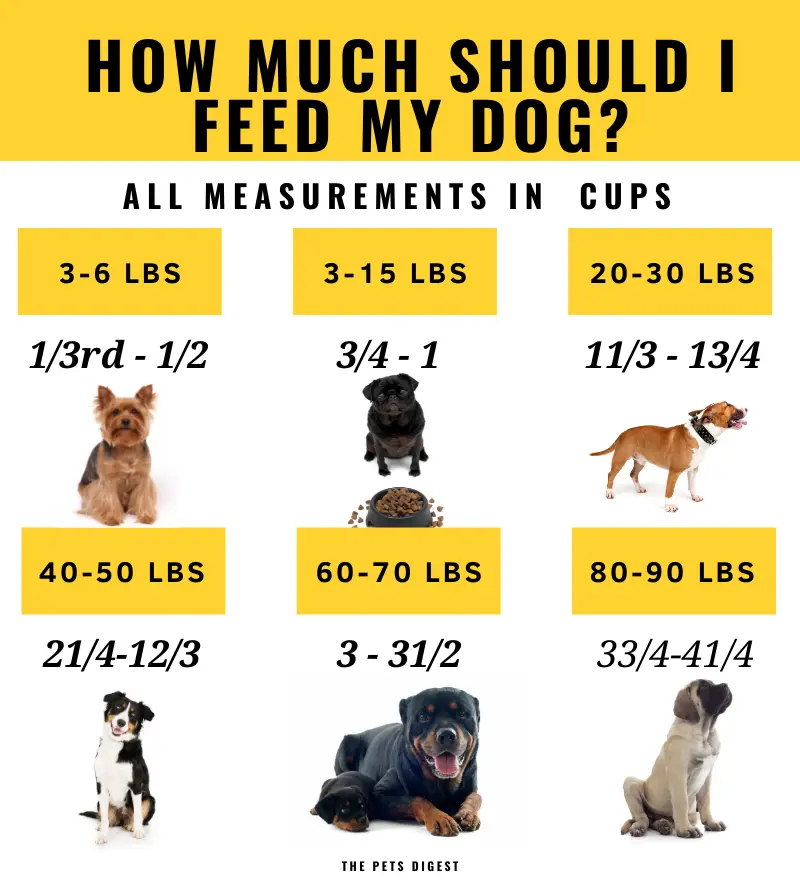
Once you have decided on a feeding schedule for your dog, it is important to remain consistent. If you are still concerned about correctly feeding your dog? Read this article about why you’re feeding your dog wrong and connect with a canine nutritionist.

